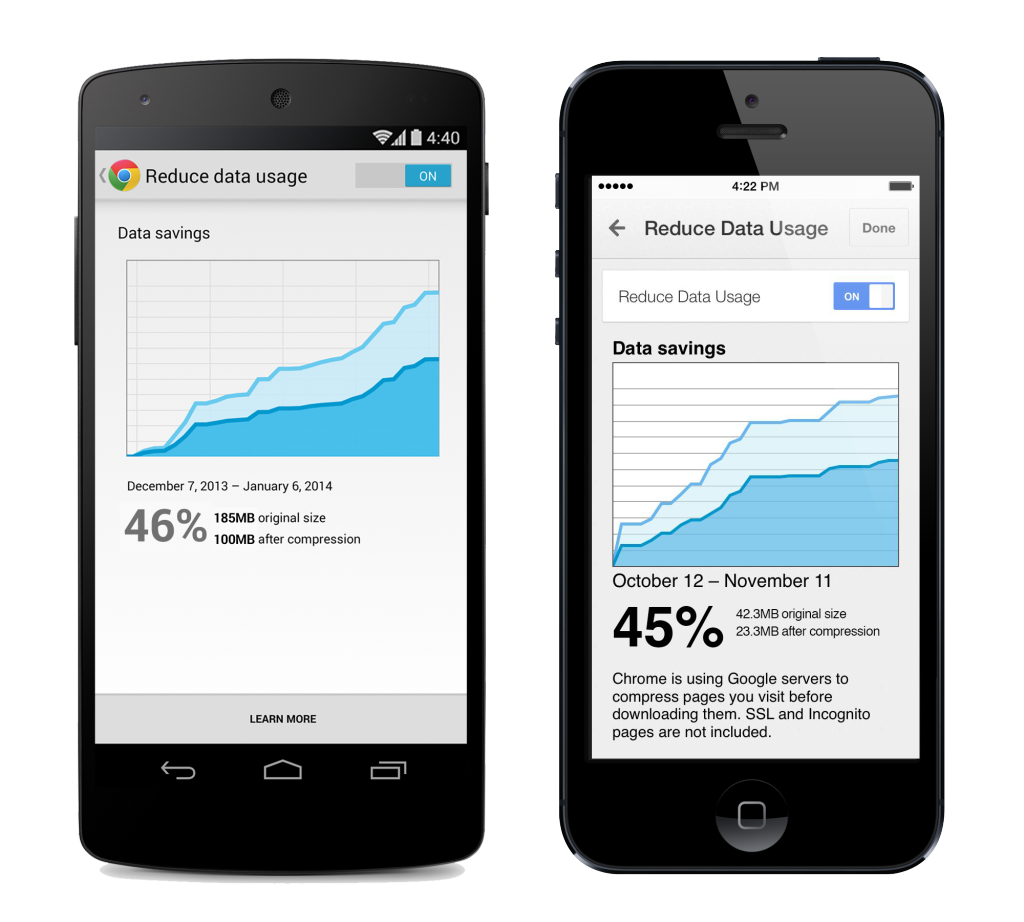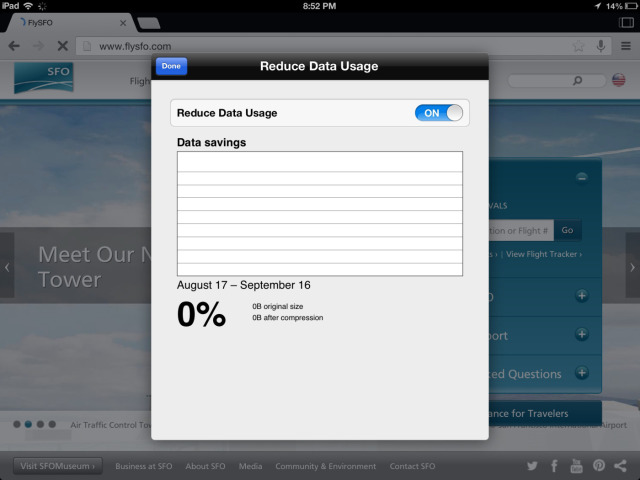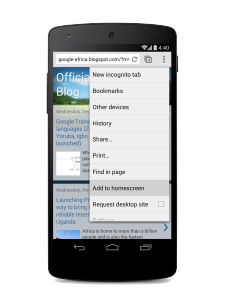

Google today is officially announcing the release of a data compression feature for its Chrome mobile web browser which allows you to reduce your data usage on smartphones and tablets, potentially saving you money on your monthly cell phone bill or data plan. The feature is one of several new additions coming to Chrome’s mobile browser, which also sees the inclusion of Google Translate on iOS, support for Application shortcuts for favorite websites on Android, and other fixes.
The data compression feature, however, is the highlight of this forthcoming release. When enabled, it will also include Chrome’s Safe Browsing technology to protect against malicious webpages. Google says the feature will roll out via app updates on the iTunes App Store and Google Play Store over the next few days.
You may recall that Google first began testing the then-experimental data compression feature on Android last March through the Chrome Beta for Android application, and then later expanded those tests to iOS in the fall.
The optional feature, essentially a Google proxy, routes web requests through Google’s servers where the company’s PageSpeed libraries compress and optimize the content. Meanwhile, the actual connection between the browser and Google’s servers is handled by the SPDY protocol for further optimization.

Whether you’re interested in the backend technologies or not, the savings Google claims to achieve through this configuration are notable. When switched on, Chrome’s data compression and bandwidth management feature can reduce data usage by up to 50%, Google says, on both Chrome for Android and Chrome for iOS. As noted earlier, even just using the PageSpeed libraries to transcode images to Google’s WebP format instead of JPEG or PNG makes a big difference, because 60% of all transferred bytes on the average webpage are images.
Mobile data compression is not a new idea, of course – for instance, Opera’s Turbo mode for its mobile browser offers a similar capability, as does Amazon Silk. Meanwhile, Google rival Facebook acquired Onavo this October, a mobile data analytics company offering consumer-facing apps (Onavo Extend) that help users optimize their devices to get more out of their data plans. In other words, Google is not alone in releasing the pressing need for users to get more out of their data plans, without being smacked with high usage bills. And keeping consumers online longer is Google’s overarching objective here.
Chrome Data Compression & Privacy
One thing to be aware of is that by turning this feature on – which is done by visiting “Settings” > “Bandwidth management” > “Reduce data usage” in the application – you’re agreeing to route all your HTTP traffic through Google’s proxy servers. (The feature is disabled for HTTPS and “Incognito” mode traffic, though).
This is concerning for some users, now more sensitive to potential privacy issues. But Google has said previously that while requests are logged, headers and cookies are stripped out, and the webpage content is cached, but not logged. Most importantly, Google says the logs are not associated with your Google account and the entire log entry is removed within six months. These details were noted in a Chrome privacy whitepaper last updated in November. Still, when the feature goes live, it will be worth keeping an eye on potential privacy policies changes…just in case.
Other Additions
 The updated apps bring a couple of other interesting additions, too. Another feature arriving on iOS is support for Google Translate in the browser – a feature which Android and desktop users already have access to. This allows you to translate a webpage into your device’s native language.
The updated apps bring a couple of other interesting additions, too. Another feature arriving on iOS is support for Google Translate in the browser – a feature which Android and desktop users already have access to. This allows you to translate a webpage into your device’s native language.
Meanwhile, Android users will be able to save favorite websites to their homescreen more easily, thanks to a Menu option “Add to homescreen.” Some websites will open up in full-screen mode after doing so, Google also notes in the blog post announcing this release.
To access any of the above options, you’ll need to download the Chrome app, or apply the update, if already installed.
Read more : Google Adds Optional Data Compression Feature To Chrome For Mobile, Reducing Your Data Usage By Up To 50%


0 Responses
Stay in touch with the conversation, subscribe to the RSS feed for comments on this post.